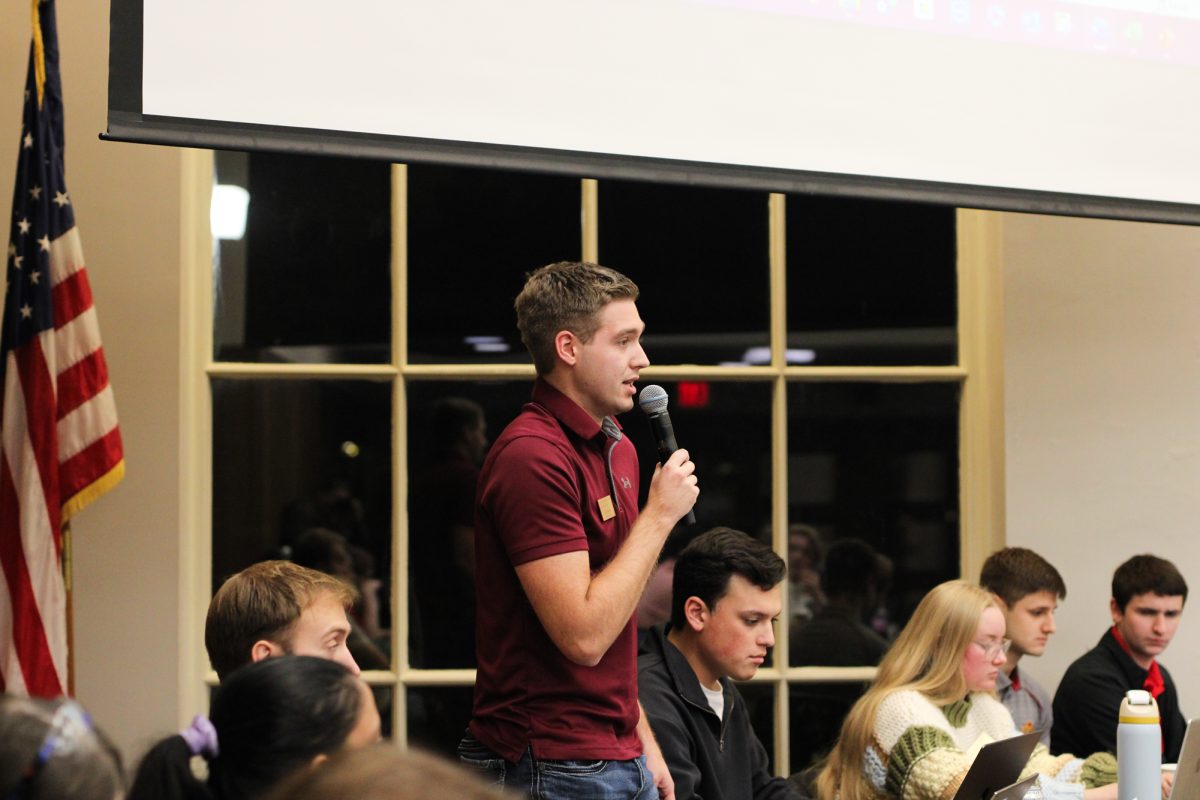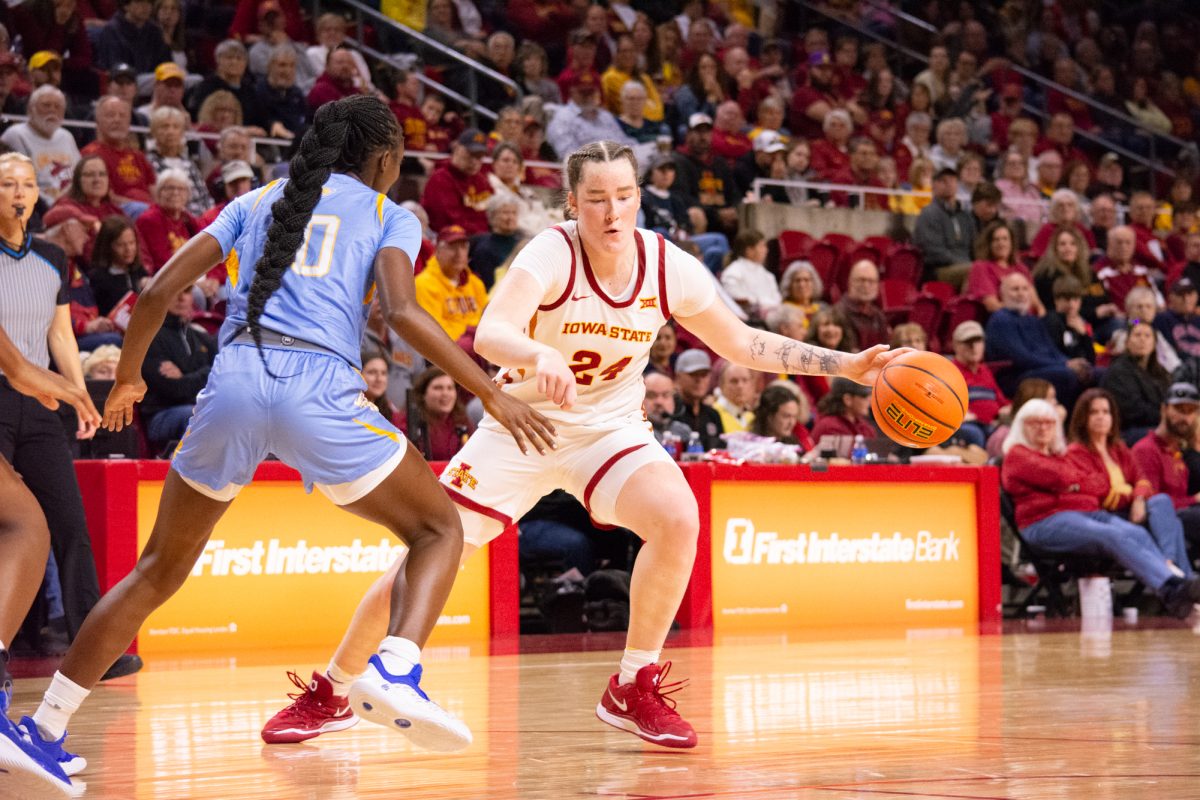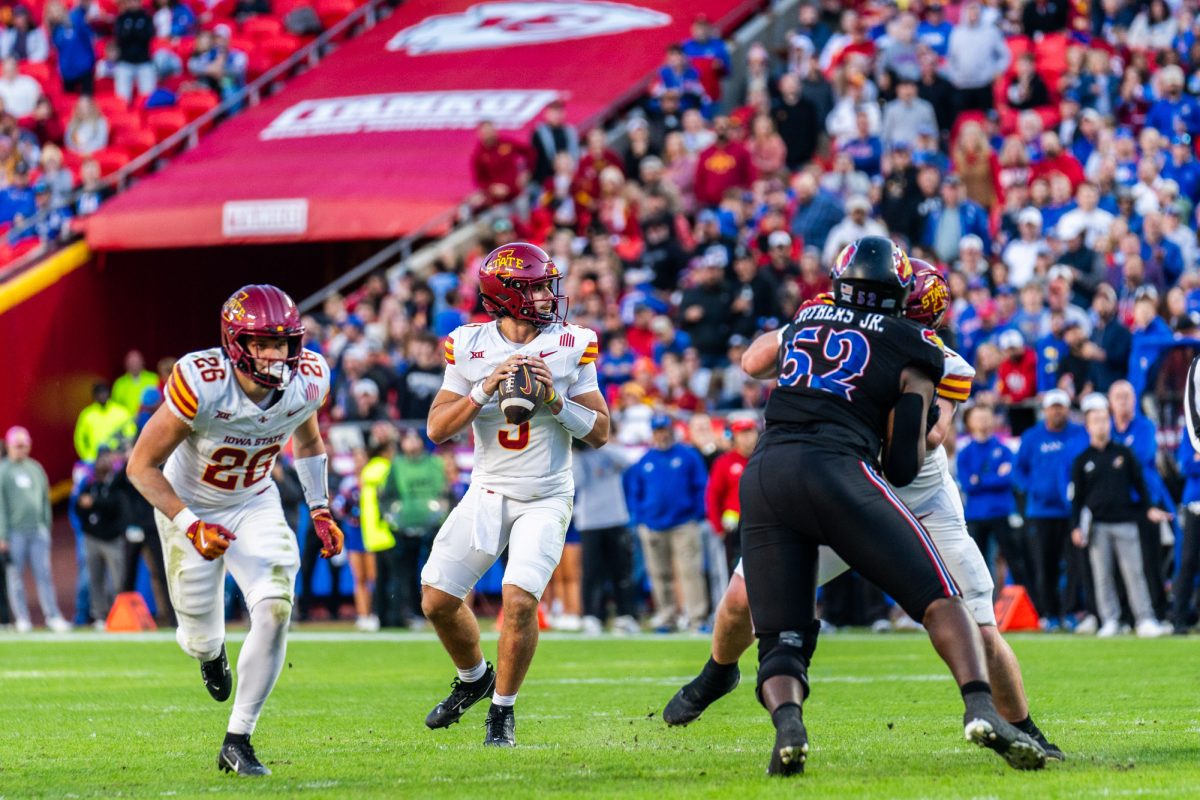Yard-O-Meter tallying all of Davis’ gains
October 23, 1995
Two Iowa State freshmen, who aren’t math majors, plus the nation’s leading rusher, equals the T.D. Yard-O-Meter.
ISU football fans can’t help but notice the large white cardboard numbers and the bright cardinal red “T.D. Yard-O-Meter” hanging over the east side balcony of Cyclone Stadium.
The idea started the night before ISU’s game against Oklahoma two weeks ago when Travis Jungling, a freshman in journalism mass communication, decided to recognize the rushing efforts of Cyclone running back Troy Davis.
At the time, Davis was only 88 yards away from becoming the first sophomore ever in major college history to break the 1,000 yard barrier in his first five games.
“I just kind of thought people should be able to keep track of the yards because Davis was racking them up pretty fast,” Jungling said.
Basing his idea on the “Shawon-O-Meter” in Wrigley Field that recognized Chicago Cub Shawon Dunston’s batting average, Jungling threw his idea at residence hall neighbor Andy Kampman.
It was late night ingenuity after that.
“It was actually Travis’ idea, and then I was the one who built it,” said Kampman, a freshman in architecture.
“I built it from one to five the night before the Oklahoma game and then before the Colorado game I made a couple of improvements on it so it wouldn’t fall apart.”
Kampman said the yard-o-meter is basically made up of cardboard squares, and he improved it for last week’s Colorado game with pieces of wood to hold the cardboard numbers down.
The two freshmen have had to rely on radio broadcasts to keep the total accurate, but it hasn’t been easy.
“Our friend, Mike, has got a headset and then we look at the scoreboard all the time too,” Kampan said. “Sometimes we get a little confused and get off a yard or two, but at halftime we get set as far as how many yards he has.”
Kampman said confusion caused them to mark Davis over 1,000 yards in the Oklahoma game before he reached it.
“A guy down in the stands told us to add a bunch of yards, so we did that because he had a radio. Then once we went over 1,000 they didn’t say anything on the big screen. We were like three yards off, so we had a little problem, but we got it right in the end,” Kampan said.
If Davis reaches 2,000 yards this season, the yard-o-meter will be there to record it, Jungling said.
“People got more excited at the Oklahoma game when he reached the milestone, but when he goes over 2,000 yards then they’ll really go nuts,” he said.
Davis currently has 1,324 rushing yards this season. He needs to average 169 yards rushing per game in the Cyclones’ last four games to be the fifth running back ever in major college history to reach 2,000 yards in a season.
After the Oklahoma game, the sophomore tailback said he didn’t see the yard-o-meter, but that was not the case after his 203 yard effort against Colorado last week.
“I had looked at it. I don’t know what quarter it was, but I saw it,” Davis said. “I forgot how many yards they had up there at the end, but I saw it this time though.”
“I think they show a lot of respect for our team by keeping up with the yardage and all that. It’s real neat though, what they’re out there doing.”
If Jungling and Kampman decide to continue the yard-o-meter, Davis said he would be all for it.
“I think that would be really good because people would just be wondering how many yards that I have,” he said. “Now they can look up there.”
The two Cyclone fans said they may also take the yard-o-meter on the road before this season is over.
“We’re thinking about taking it to Nebraska, but we don’t know if it will be as welcome over there,” Jungling said.
Both of them agreed the yard-o-meter will continue next year, but with a little twist.
“We’re going to have two of them next year, the Darren Davis meter and the Troy Davis meter,” Jungling said.
Will they recruit a math major to help them keep track of the two?
“Possibly,” Kampman said.






